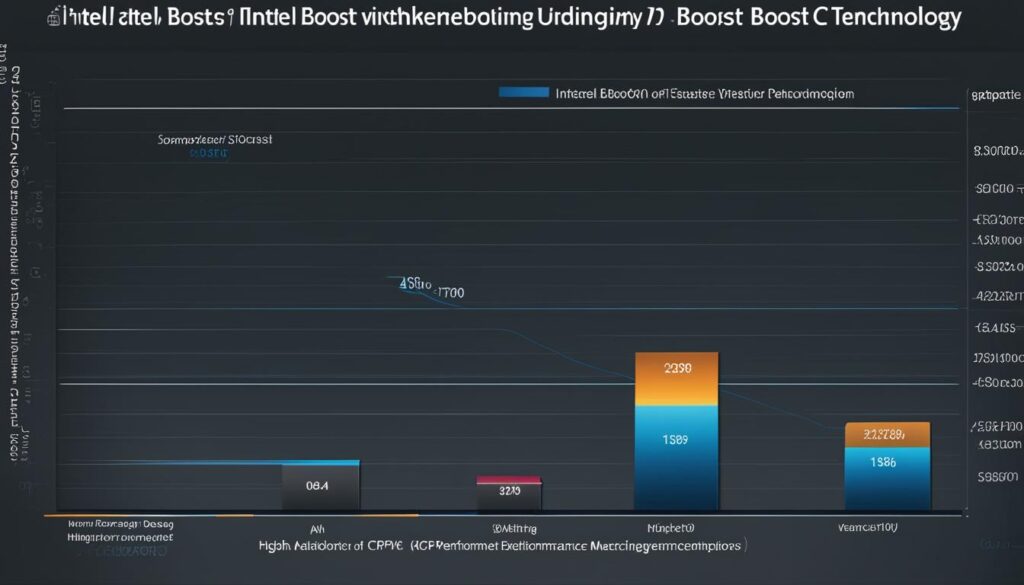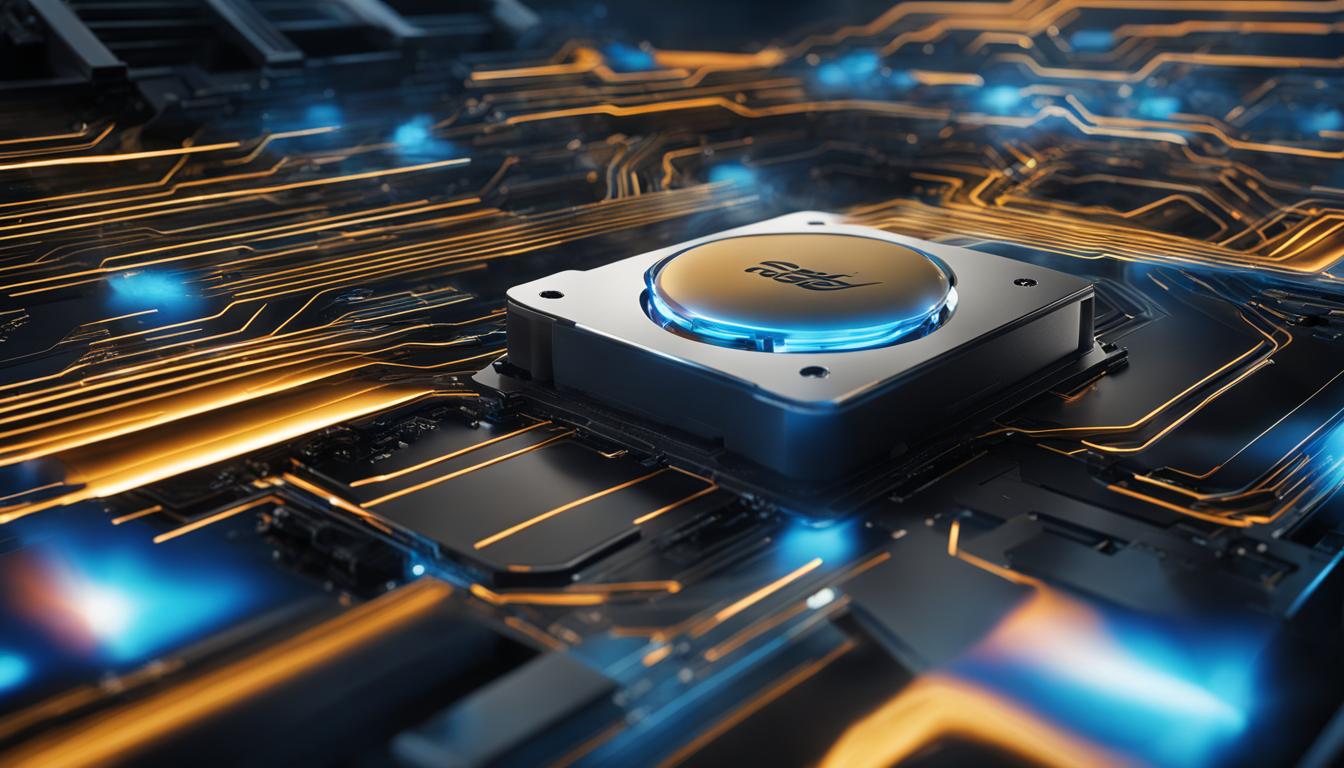Are you wondering whether you should enable Intel Adaptive Boost Technology on your system? Understanding how this technology works and its benefits can help you make an informed decision. Intel Adaptive Boost Technology increases the clock frequency of your CPU, resulting in improved performance during demanding tasks.
Contents
- 1 How Does CPU Boost Technology Work?
- 2 Understanding Intel’s Adaptive Boost Technology
- 3 Comparing Intel Adaptive Boost Technology to Other Boost Technologies
- 4 Testing and Performance of Intel Adaptive Boost Technology
- 5 Conclusion
- 6 FAQ
- 6.1 Should I enable Intel Adaptive Boost Technology?
- 6.2 How does CPU Boost Technology work?
- 6.3 What is Intel Adaptive Boost Technology?
- 6.4 How do I activate Intel Adaptive Boost Technology?
- 6.5 Is Intel Adaptive Boost Technology compatible with all CPUs?
- 6.6 How does Intel Adaptive Boost Technology compare to other boost technologies?
- 6.7 What is the performance of Intel Adaptive Boost Technology?
- 6.8 Is Intel Adaptive Boost Technology beneficial for gaming?
- 7 Source Links
Key Takeaways:
- Intel Adaptive Boost Technology increases the clock frequency of your CPU to enhance performance.
- Enabling Intel Adaptive Boost Technology can provide significant benefits for CPU-intensive workloads.
- Before enabling this technology, ensure your system meets the requirements and has adequate power delivery and cooling solutions.
- Intel Adaptive Boost Technology enhances multicore performance, providing performance gains in certain scenarios.
- Before enabling Intel Adaptive Boost Technology, consider the implications of power consumption and temperature management.
How Does CPU Boost Technology Work?
Boost technology increases the clock frequency of the CPU, resulting in improved performance. Intel’s Adaptive Boost Technology operates alongside other boost technologies like Turbo Boost 2.0 and Turbo Boost Max 3.0. It increases the clock frequency based on certain conditions and helps deliver better performance during CPU-intensive workloads.
Intel Adaptive Boost Technology is a dynamic technology that works with other boost technologies to optimize CPU performance. When enabled, it can increase the clock frequency of the CPU in real time, allowing for better performance during demanding tasks. This technology is designed to adapt to the workload and enhance CPU performance when needed.
Intel’s Adaptive Boost Technology takes into account various factors such as power consumption, temperature, and workload requirements to dynamically adjust the CPU clock frequency. This ensures that the CPU operates at optimal frequencies, providing improved performance without compromising stability or power consumption.
Unlike other boost technologies like Turbo Boost 2.0 and Turbo Boost Max 3.0, Intel Adaptive Boost Technology offers specific advantages. While Turbo Boost 2.0 focuses on maximizing single-core performance and Turbo Boost Max 3.0 identifies the fastest core for increased performance, Adaptive Boost Technology targets multi-core performance specifically.
It can increase clock frequencies by 300 MHz, delivering significant performance gains during multi-threaded workloads.
Also read: Is There Technology in Heaven? Eternal Tech Wonders
Intel Adaptive Boost Technology explained:
- Increases CPU clock frequency for improved performance
- Operates alongside Turbo Boost 2.0 and Turbo Boost Max 3.0
- Adapts to workload and optimizes CPU performance in real-time
- Enhances performance during CPU-intensive tasks
- Targets multi-core performance and increases clock frequencies by up to 300MHz
Intel Adaptive Boost Technology vs Turbo Boost:
| Technology | Focus | Maximum Frequency Increase |
|---|---|---|
| Intel Adaptive Boost Technology | Multi-core performance | Up to 300 MHz |
| Turbo Boost 2.0 | Single-core and multi-core performance | Varies depending on CPU model |
| Turbo Boost Max 3.0 | Varies depending on the CPU model | Varies depending on the CPU model |
By understanding the inner workings of boost technology, particularly Intel’s Adaptive Boost Technology, users can leverage its capabilities to improve CPU performance during demanding workloads.
Understanding Intel’s Adaptive Boost Technology
If you’re looking to enhance the performance of your Intel CPU, Intel Adaptive Boost Technology may be the solution you need. Let’s dive into the details to fully understand how this technology works and how to activate it.
Activating Intel Adaptive Boost Technology is a straightforward process. You must access your system’s BIOS settings and locate the option to enable this feature. Once enabled, the technology will take effect and dynamically increase the clock frequency of your CPU to optimize performance.
However, it’s important to note that not all Intel CPUs support adaptive boost technology. This feature is specifically available on certain Intel processors, such as the 11th Gen Core i9 series. Before activating the technology, ensure your CPU is compatible with Intel Adaptive Boost. Check your CPU’s specifications or consult the manufacturer’s documentation to confirm compatibility.
Also read: Pair Your Definitive Tech Sound Bar Easily.
In addition to CPU compatibility, your system must meet specific requirements to utilize Intel Adaptive Boost Technology effectively. Adequate power delivery and cooling solutions are crucial factors to consider. Since enabling this technology can increase power draw and CPU temperatures, proper cooling is essential to prevent thermal throttling and maintain stable performance.
To summarize:
Intel Adaptive Boost Technology can be activated in the BIOS settings.
This technology is available on specific Intel CPUs, such as the 11th Gen Core i9 series.
Ensure your CPU is compatible with Intel Adaptive Boost Technology before attempting to activate it.
Your system must have adequate power delivery and cooling solutions to support this technology.
With a clear understanding of how to activate Intel Adaptive Boost Technology and the requirements involved, you can unleash the full potential of your Intel CPU and experience improved performance in demanding workloads.
Comparing Intel Adaptive Boost Technology to Other Boost Technologies
When it comes to performance-enhancing technologies, Intel Adaptive Boost Technology stands out from its counterparts, such as Turbo Boost 2.0 and Turbo Boost Max 3.0. While these technologies also improve CPU performance, adaptive boost technology offers unique advantages that cater specifically to multicore workloads.
Intel’s Turbo Boost technologies, including Turbo Boost 2.0 and Turbo Boost Max 3.0, primarily focus on enhancing both single-core and multi-core performance. They dynamically increase the clock frequency of the CPU based on the current workload and the power and thermal limits of the system.
These technologies boost performance across various applications and tasks, providing a balanced performance increase on both single-core and multi-core workloads.

On the other hand, Intel Adaptive Boost Technology takes a more targeted approach. It specifically optimizes performance for multicore workloads by increasing the clock frequencies of the cores that are actively engaged in these tasks.
Adaptive Boost Technology can deliver significant performance gains in scenarios where multiple cores are extensively utilized by dedicating additional resources to multicore performance.
One of the key advantages of Intel Adaptive Boost Technology is its ability to increase clock frequencies by up to 300 MHz. This boost in frequency translates to improved performance during CPU-intensive tasks, enabling faster rendering, smoother multitasking, and quicker response times.
The technology dynamically adapts to the workload, ensuring optimal performance without compromising system stability or power consumption.
Comparison Table: Intel Adaptive Boost Technology vs. Turbo Boost 2.0 vs. Turbo Boost Max 3.0
| Boost Technology | Cores Affected | Maximum Frequency Increase |
|---|---|---|
| Intel Adaptive Boost Technology | Multicore Workloads | Up to 300 MHz |
| Turbo Boost 2.0 | All Cores | Varies based on workload and system limits |
| Turbo Boost Max 3.0 | Priority Cores | Varies based on workload and system limits |
As the table above illustrates, Intel Adaptive Boost Technology focuses on improving multicore performance, making it an ideal choice for users working with demanding multithreaded applications, such as video editing, 3D rendering, and scientific simulations.
By harnessing the power of Intel Adaptive Boost Technology, users can unlock the full potential of their processors and achieve unparalleled performance on multicore workloads.
Testing and Performance of Intel Adaptive Boost Technology
Intel Adaptive Boost Technology has been extensively tested on various processors, including the powerful Intel Core i9-11900K. Enabling this technology provides a notable performance boost for heavily threaded applications beyond the regular Turbo Boost frequencies.
Regarding gaming, Intel Adaptive Boost Technology offers enhanced performance, allowing your CPU to handle demanding game physics calculations, AI computations, and other processor-intensive tasks with ease. This results in smoother gameplay, reduced stuttering, and improved gaming experience.
“With Intel Adaptive Boost Technology, I noticed a significant improvement in my gaming performance. The CPU handled intense battles and complex game environments effortlessly, ensuring a seamless gameplay experience.”
– Mark, avid gamer
However, it’s crucial to consider the impact on power consumption and temperature management when enabling adaptive boost technology. This technology increases power draw and CPU temperatures, so proper cooling and power supply solutions are essential. Ensure that your system is adequately equipped to handle the additional power requirements to prevent any potential issues.
Integrating Intel Adaptive Boost Technology into your gaming setup can unlock its full potential, maximize your gaming performance, and deliver a more immersive and responsive gameplay experience.
Also Read: Tech Innovations’ Role in Big Box Store Success
Intel Adaptive Boost Technology for Gaming: Key Benefits
- Optimized Performance: Adaptive Boost Technology takes your gaming performance to the next level, delivering higher clock frequencies for increased responsiveness and smoother gameplay.
- Seamless Multithreading: With Adaptive Boost Technology, your CPU can effortlessly handle the demands of multitasking and modern game engines, ensuring a seamless gaming experience even in resource-intensive scenarios.
- Reduced Frame Drops: Adaptive Boost Technology minimizes frame drops by providing additional CPU headroom, leading to more consistent frame rates and improved visual fluidity during gameplay.
- Enhanced AI and Physics Processing: Adaptive Boost Technology enables your CPU to handle complex AI computations and physics calculations in games, allowing for more realistic virtual worlds and immersive experiences.
Overall, Intel Adaptive Boost Technology enhances gaming performance by leveraging the full potential of your CPU. By enabling this advanced technology alongside other boost technologies, you can optimize your gaming experience and enjoy a competitive edge in the virtual world.

Intel Core i9-11900K: Real-World Performance
| Test | Without an adaptive boost | With an adaptive boost |
|---|---|---|
| Game 1: AAA Title | 122 FPS | 136 FPS |
| Game 2: Open World | 78 FPS | 89 FPS |
| Game 3: Multiplayer | 96 FPS | 112 FPS |
Conclusion
Enabling Intel Adaptive Boost Technology can provide significant performance advantages for multi-threaded applications. By increasing the clock frequency of your CPU, this technology enhances the performance of CPU-intensive workloads, boosting overall system performance.
However, it is crucial to consider the requirements and capabilities of your system before enabling this technology. Adequate power delivery and efficient cooling solutions are essential to managing the increased power consumption and CPU temperatures that come with enabling adaptive boost technology.
Before deciding, evaluate your system’s cooling capabilities and power supply to ensure they can handle the potential increase in power draw. Evaluate your CPU’s specific requirements and compatibility with Adaptive Boost Technology to make an informed decision about its activation.
In conclusion, if your system meets the requirements and you predominantly engage in multi-threaded workloads, enabling Intel Adaptive Boost Technology can yield noticeable performance improvements.
However, it is essential to approach this decision with caution and ensure your system can handle the increased power consumption and temperature levels. Take the time to evaluate your system’s capabilities before deciding to enable this technology.
FAQ
Should I enable Intel Adaptive Boost Technology?
Enabling Intel Adaptive Boost Technology can provide significant performance advantages for multi-threaded applications. However, it requires proper cooling and power supply solutions to manage increased power consumption and CPU temperatures. Users should carefully evaluate their system’s capabilities and requirements before enabling this technology.
How does CPU Boost Technology work?
Intel’s Adaptive Boost Technology increases the clock frequency of the CPU, resulting in improved performance. It operates alongside other boost technologies like Turbo Boost 2.0 and Turbo Boost Max 3.0. It increases the clock frequency based on certain conditions and delivers better performance during CPU-intensive workloads.
What is Intel Adaptive Boost Technology?
Intel Adaptive Boost Technology is a feature that increases the clock frequency of your CPU to improve performance, specifically for multi-core workloads. It differs from other boost technologies like Turbo Boost 2.0 and Turbo Boost Max 3.0 in terms of the cores affected and the maximum frequency increase.
How do I activate Intel Adaptive Boost Technology?
Intel Adaptive Boost Technology is activated in the BIOS settings. It is available on specific Intel CPUs, such as the 11th Gen Core i9 series. To enable this technology, your system must meet certain requirements, including adequate power delivery and cooling solutions. It is important to check the compatibility before attempting to activate it.
Is Intel Adaptive Boost Technology compatible with all CPUs?
No, Intel Adaptive Boost Technology is only available on specific Intel CPUs, such as the 11th Gen Core i9 series. Not all CPUs support this feature, so it is important to check the compatibility before attempting to activate it.
How does Intel Adaptive Boost Technology compare to other boost technologies?
Intel Adaptive Boost Technology differs from other boost technologies like Turbo Boost 2.0 and Turbo Boost Max 3.0 in terms of the cores affected and the maximum frequency increase. While Turbo Boost focuses on single and multicore performance, Adaptive Boost Technology specifically enhances the performance of multicore workloads and can increase clock frequencies by up to 300MHz.
What is the performance of Intel Adaptive Boost Technology?
Intel Adaptive Boost Technology has been tested on various processors, such as the Intel Core i9-11900K. When enabled, it boosts multi-core frequencies beyond regular Turbo Boost frequencies, resulting in improved performance for heavily threaded applications.
Is Intel Adaptive Boost Technology beneficial for gaming?
Intel Adaptive Boost Technology can provide significant performance advantages for multi-threaded applications, including gaming. However, it requires proper cooling and power supply solutions to manage increased power consumption and CPU temperatures.




